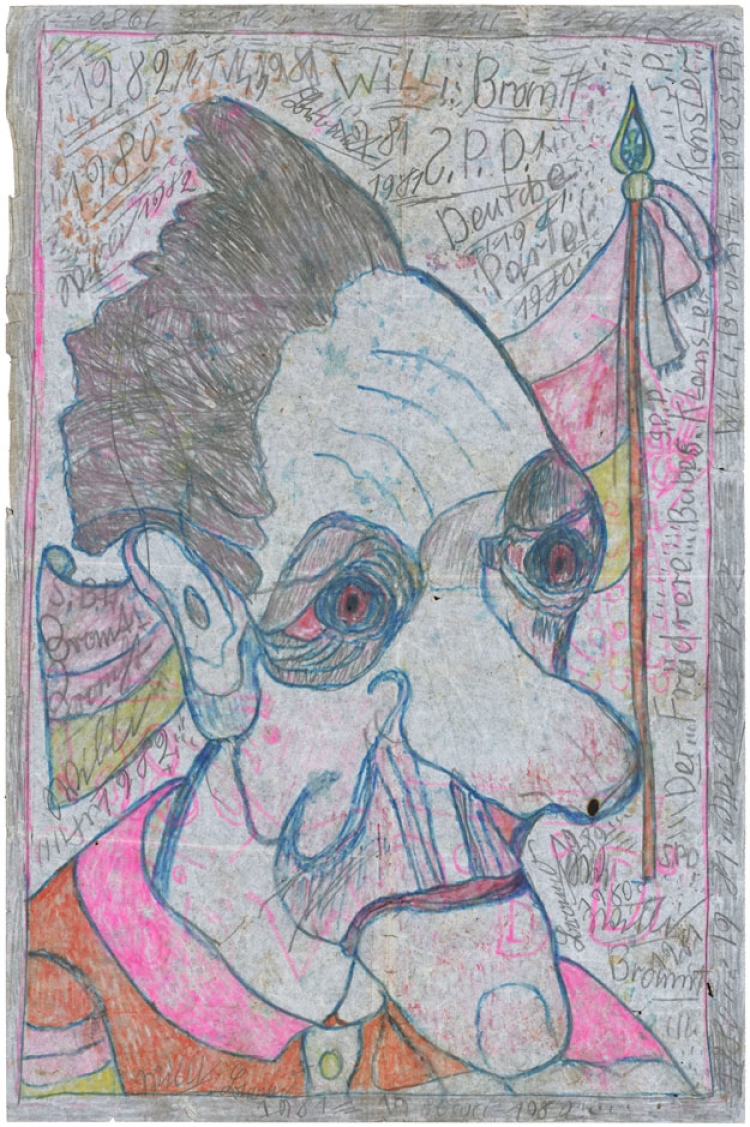Wagemann, Theodor, dit Théo

Willi Brandt
Théo Willi Brandt, 1981 felter pen and coloured pencil on paper 37,5 x 25 cm © photo credit Collection de l’Art Brut, Lausanne
Author
Wagemann, Theodor, dit Théo,
(1918-1998), Germany
Biography
Theo (1918–1998) was born in a small village near Aachen, in Germany, where his father was a stonemason. When he was twelve, he became involved in food smuggling along with other people in the village. One day he and his accomplices were surprised by customs officers, who intimidated them with gunshots. Following this incident Theo became withdrawn, retreating into almost total silence, and spent his time taking long walks in the surroundings. It seems it was also at this time that he started drawing caricatures of clergymen. During the Second World War, when Hitler conceived his programme for exterminating the mentally ill, Theo escaped the gas chamber thanks to his family doctor, but was subjected to enforced sterilisation. Gradually he began collecting rubbish which he piled up at home.
When he was 61, his family decided to have him committed. He then devoted himself to drawing, using parchment paper salvaged from the institution's kitchen and coloured pencils or felt-tips given him by his relatives.
He made hundreds of compositions, their main themes being portraits of Hitler and Nazi dignitaries. His works are accompanied by xenophobic slogans and dates referring to the years associated with the Third Reich. Theo's pictorial world also drew on biblical scenes and magazine cuttings of people in the news. He wrote a text on the backs of his works, then signed them in Gothic script and sent them to his family in small envelopes. The works he kept were hidden under his bed or among his clothes.
Shop
- People (Exhibition catalogues)
- Pathologie du cadre (Exhibition catalogues)
- Croyances (french version) (Exhibition catalogues)
- Beliefs (english version) (Exhibition catalogues)







